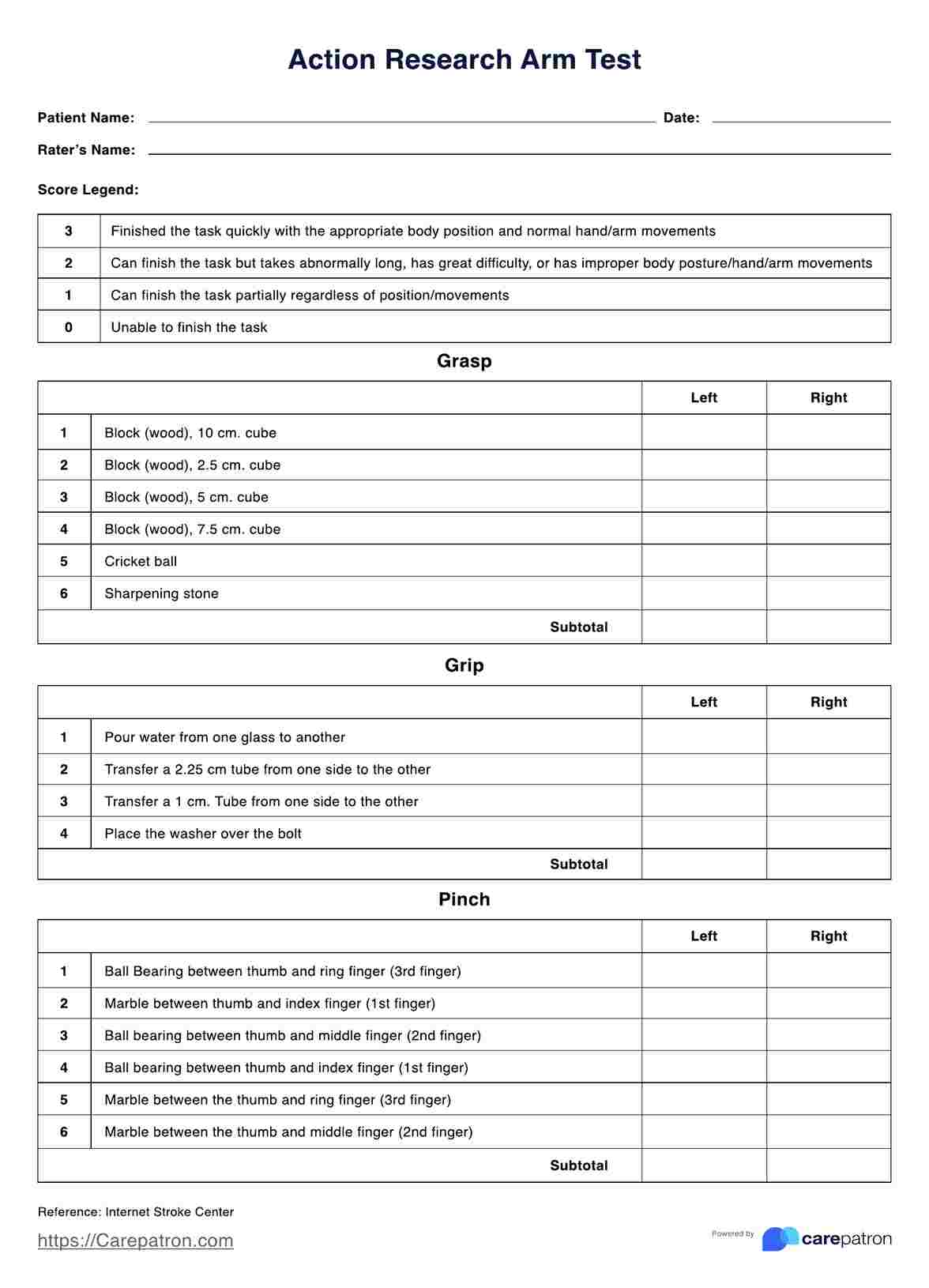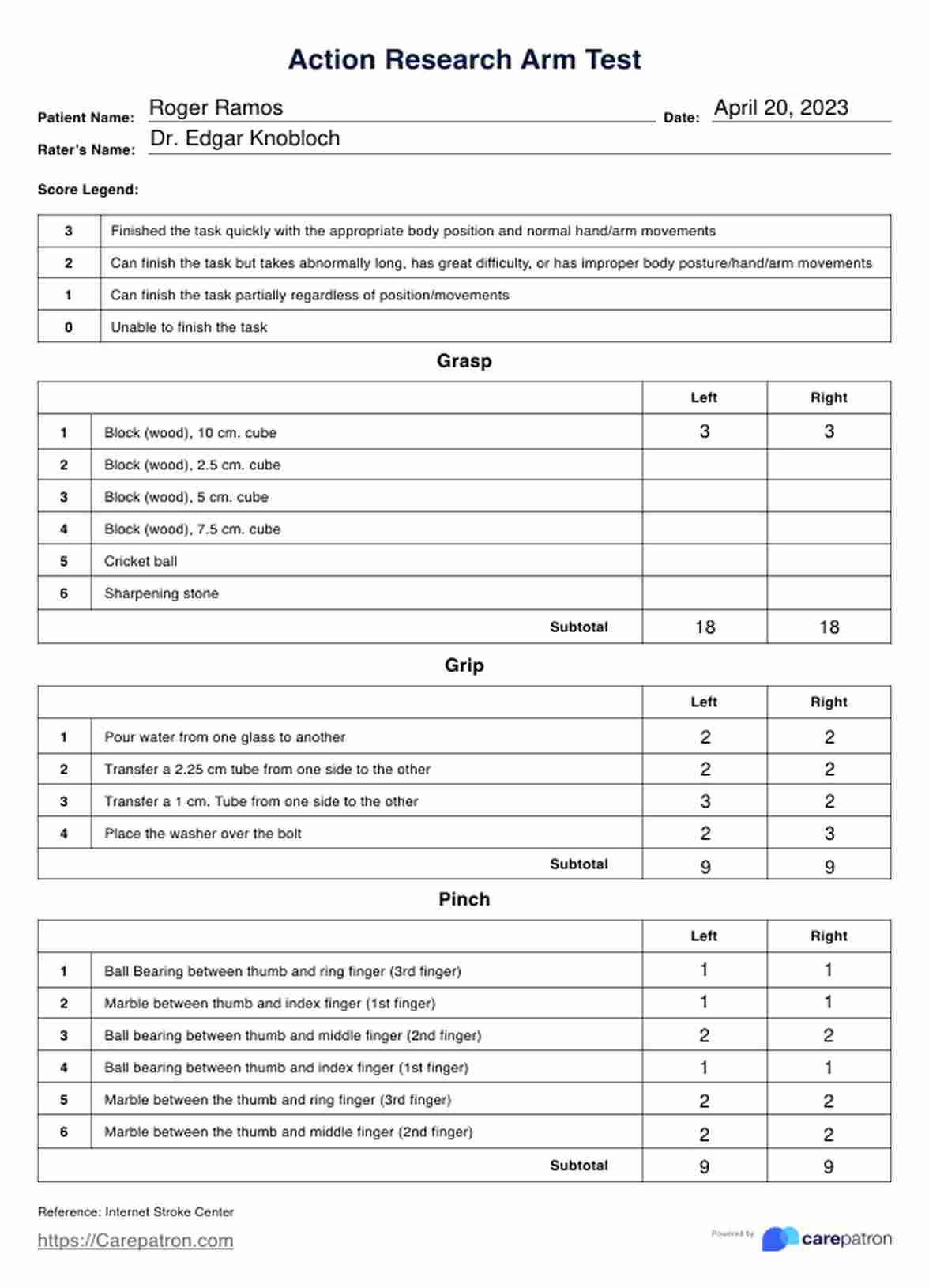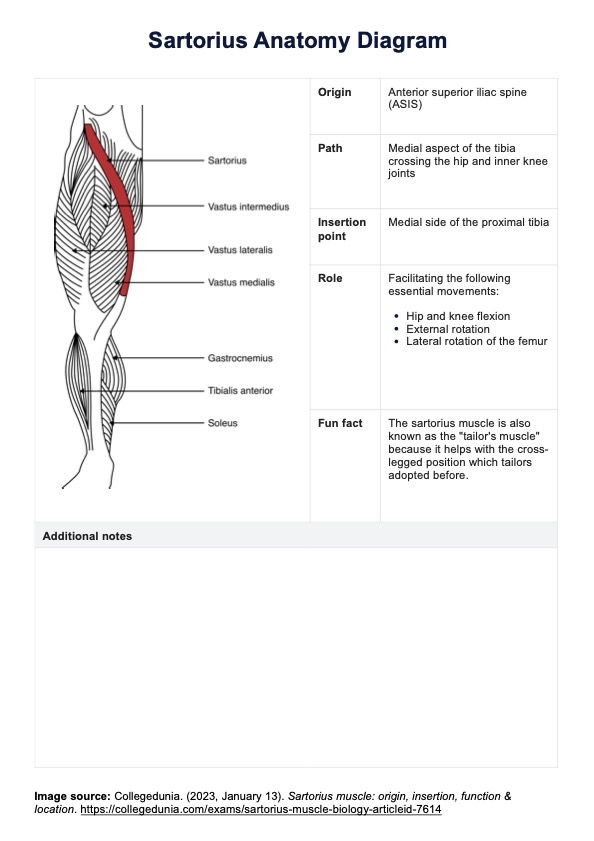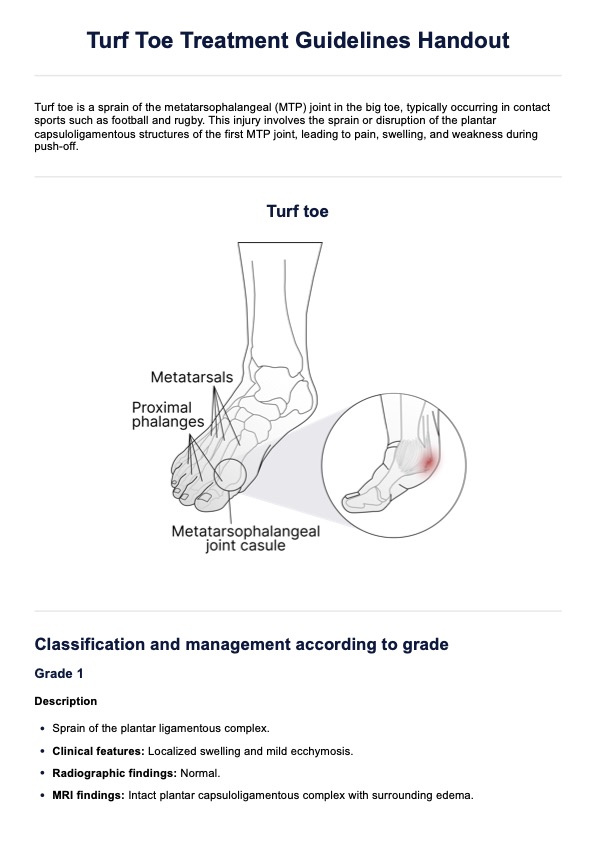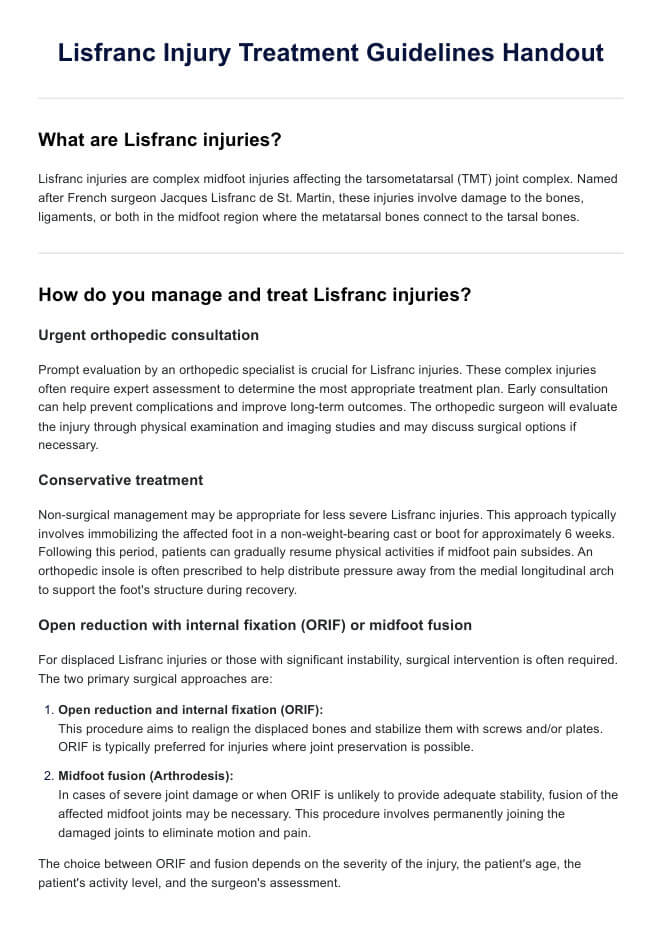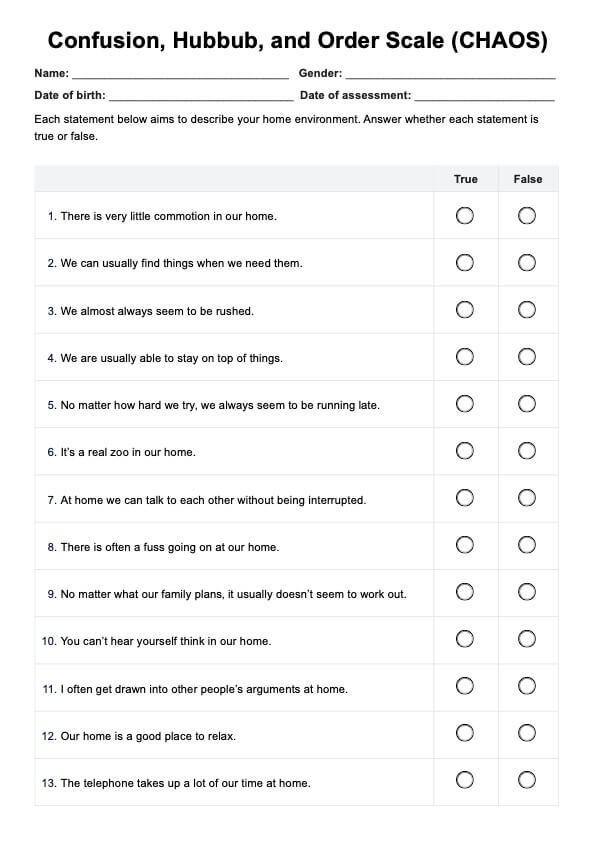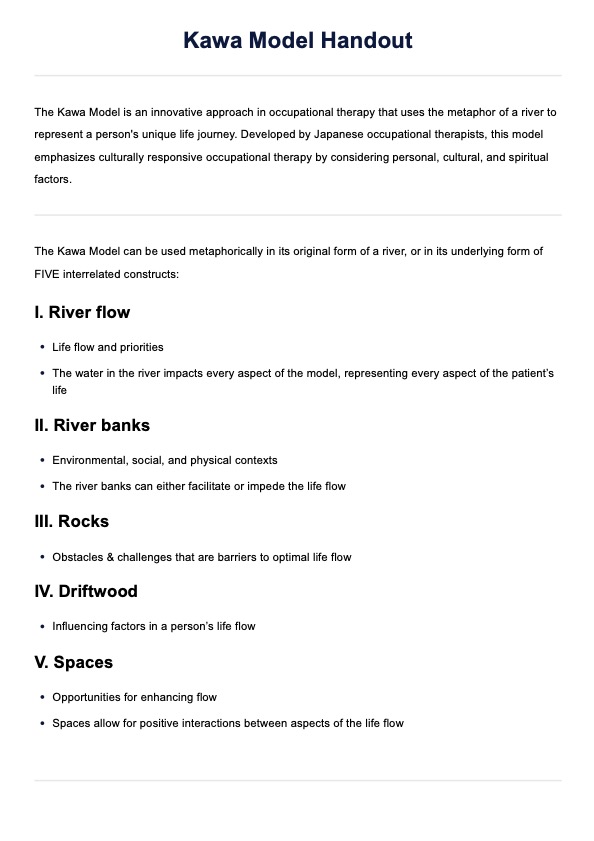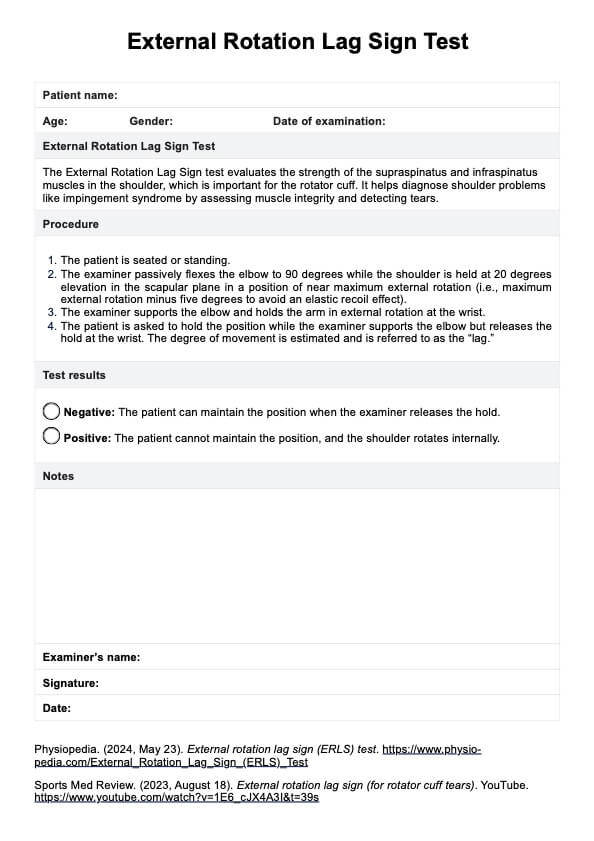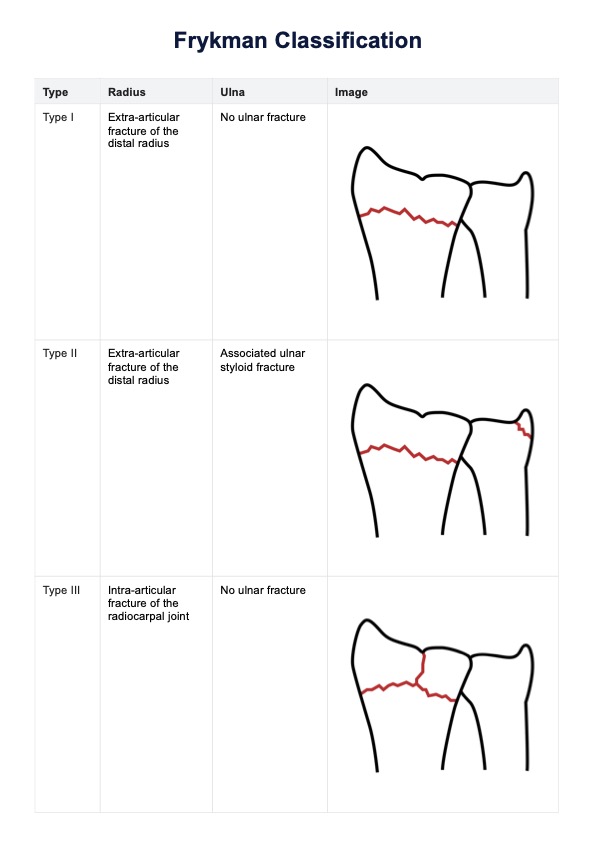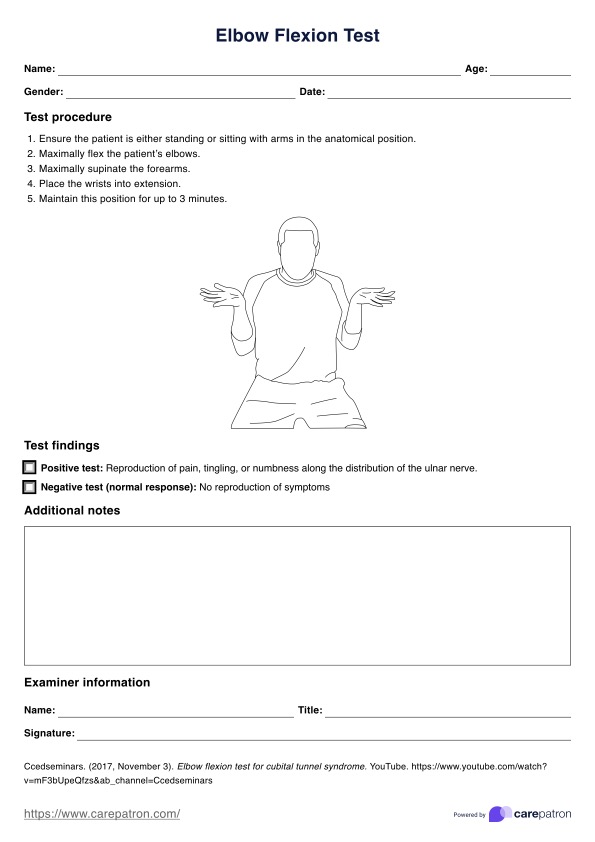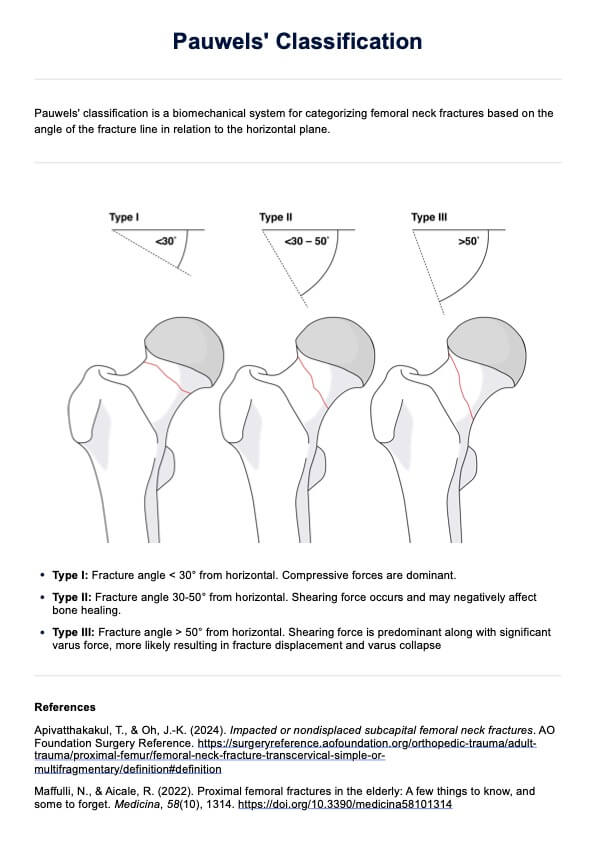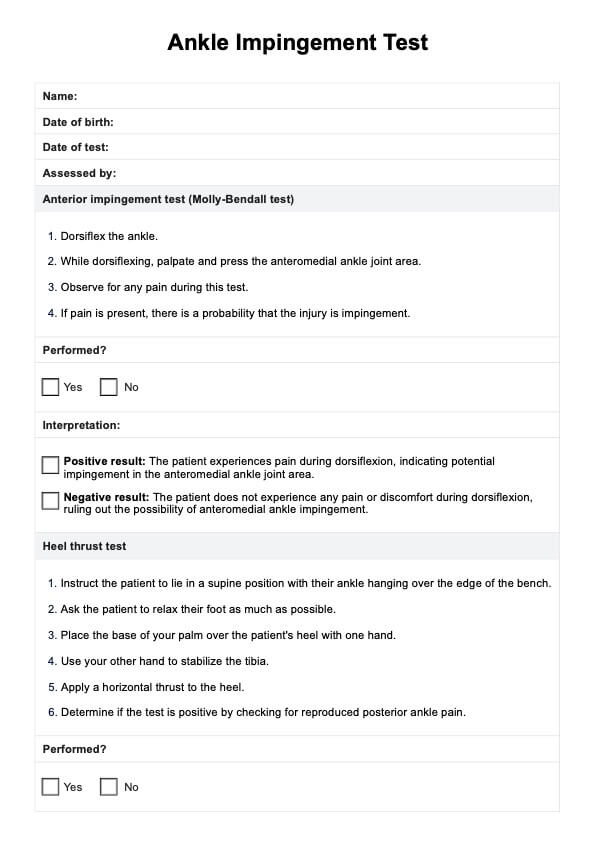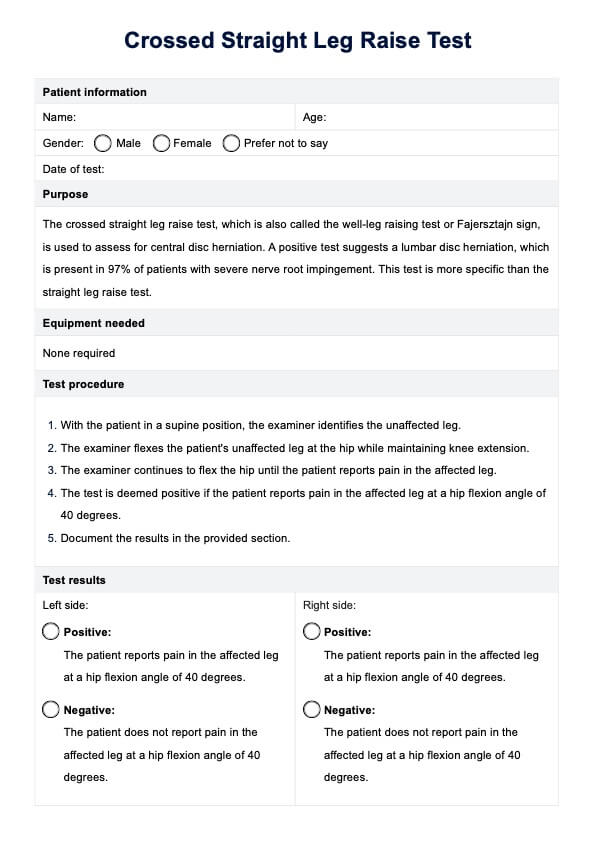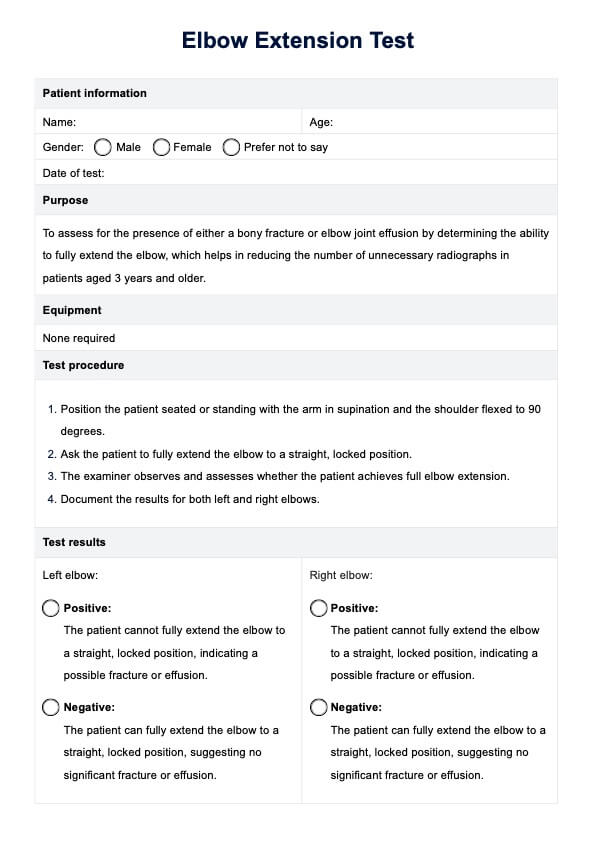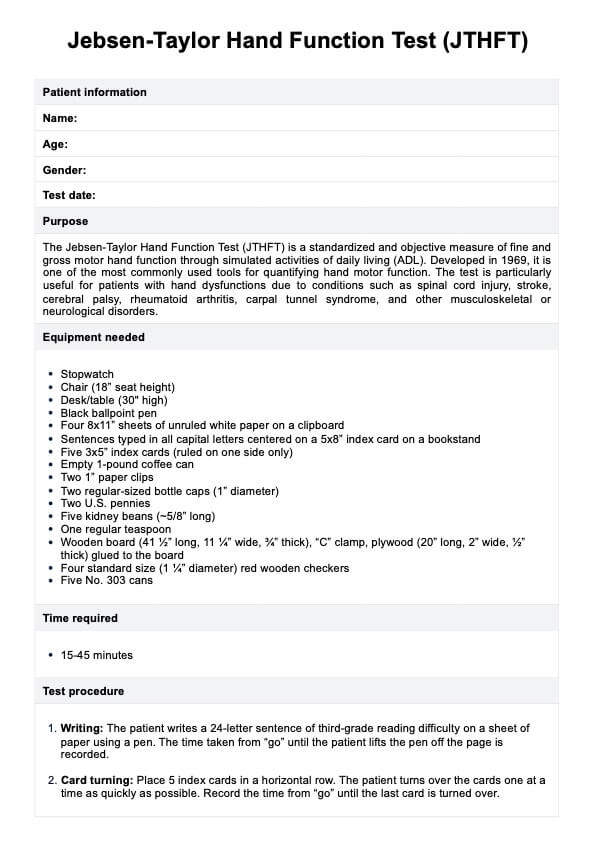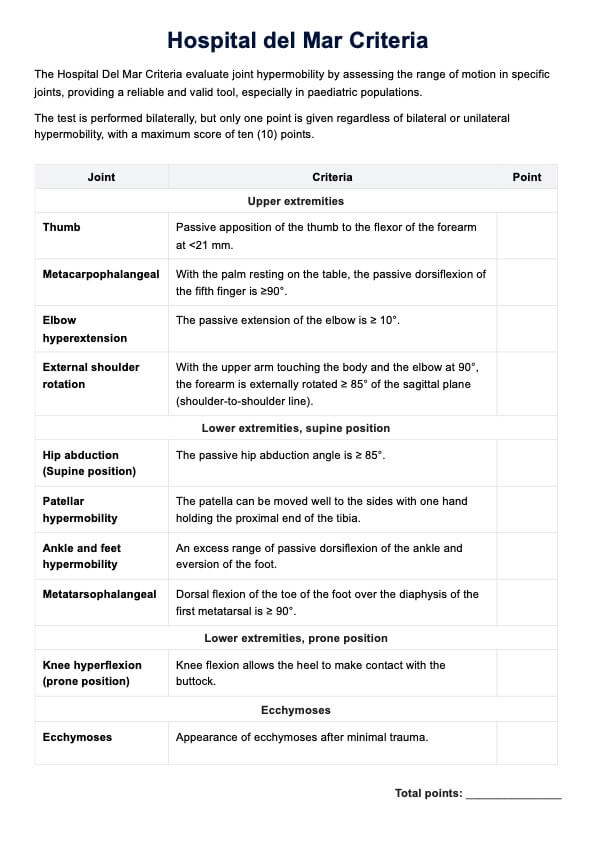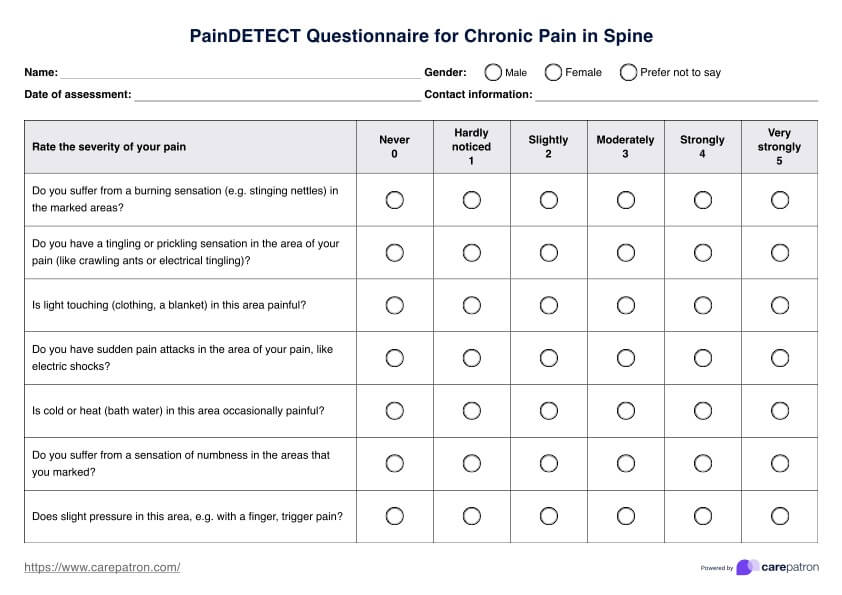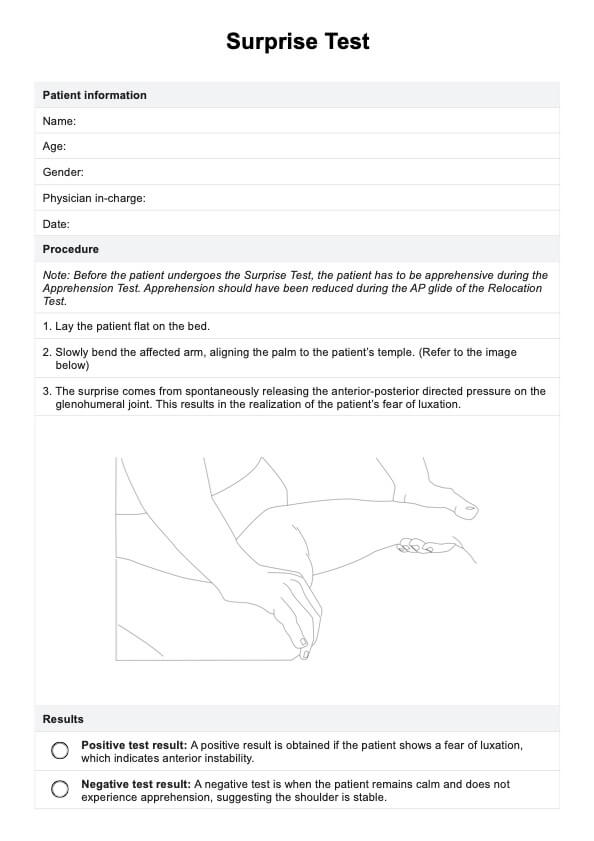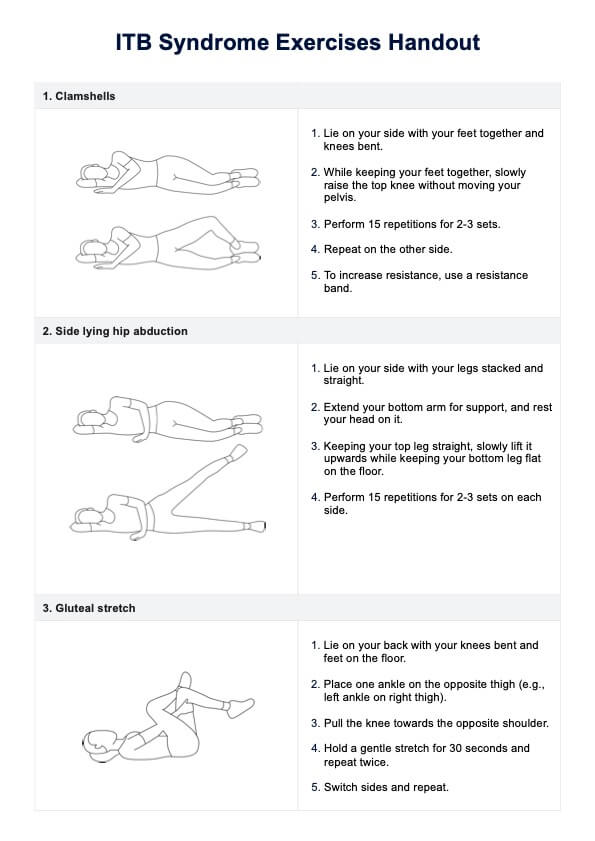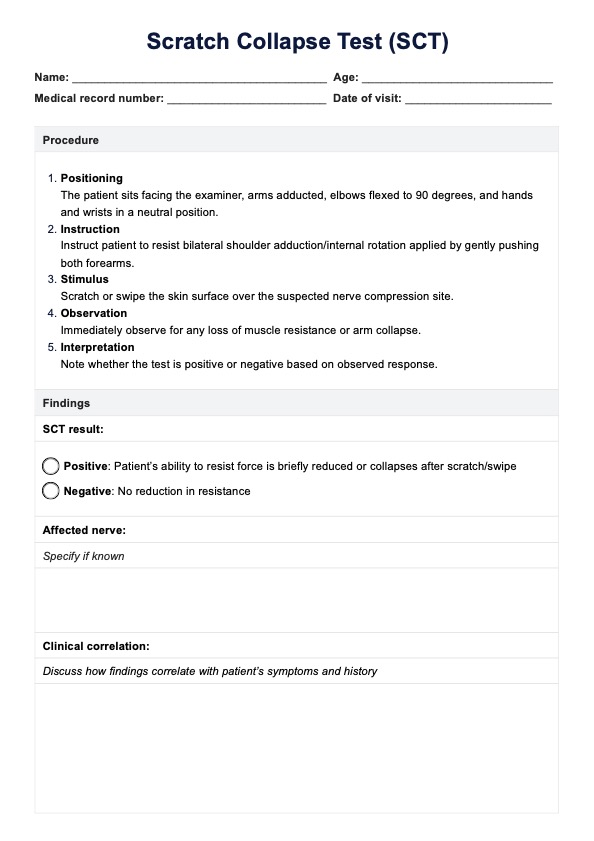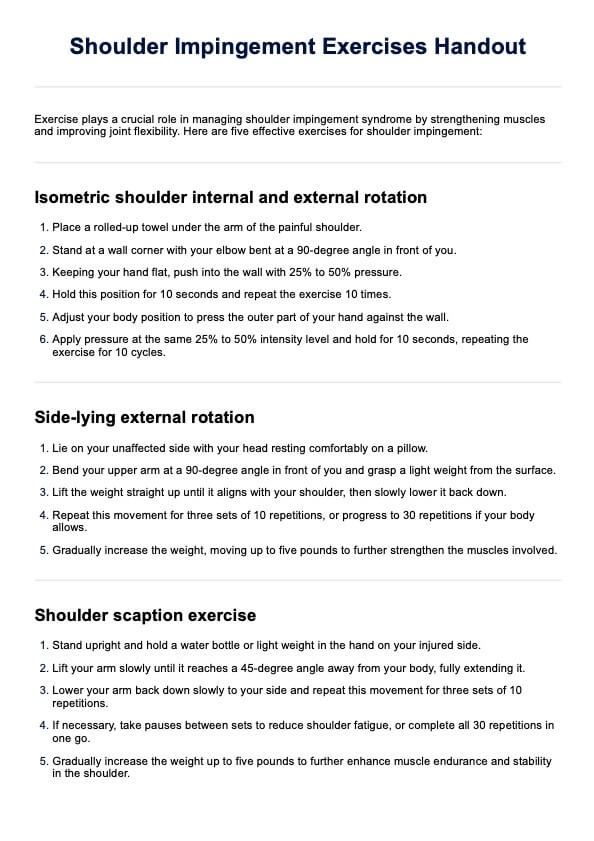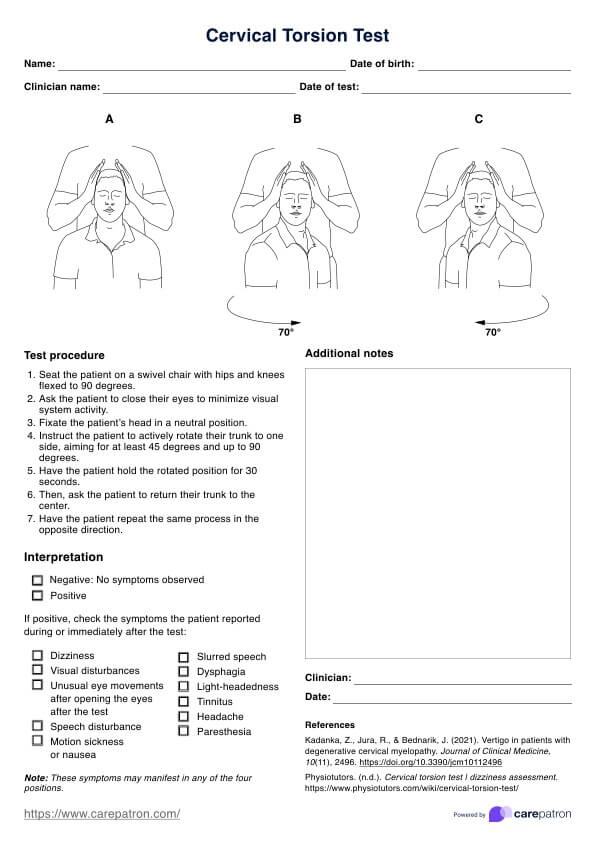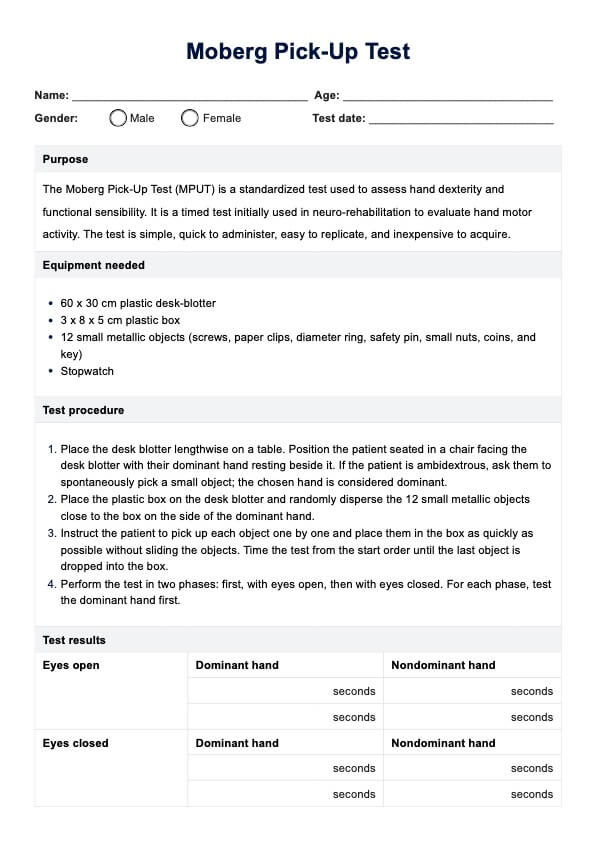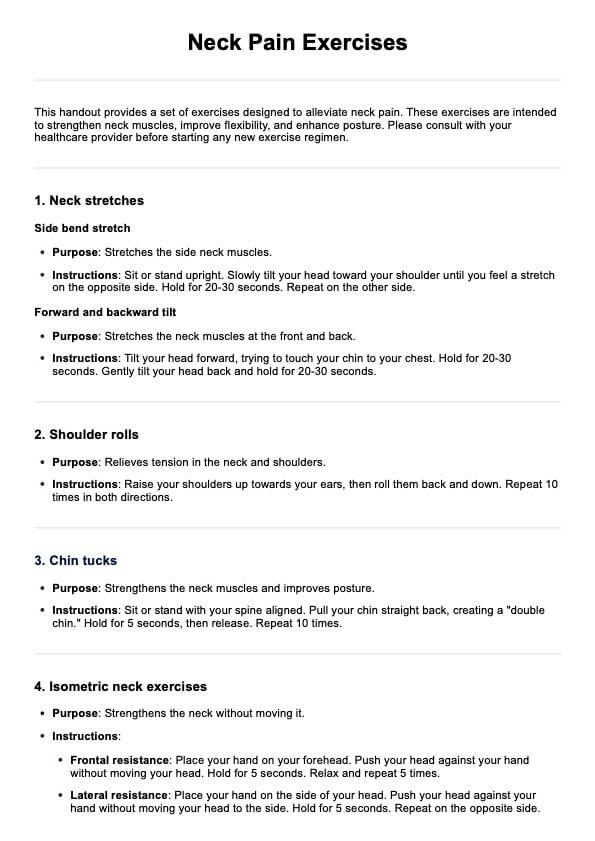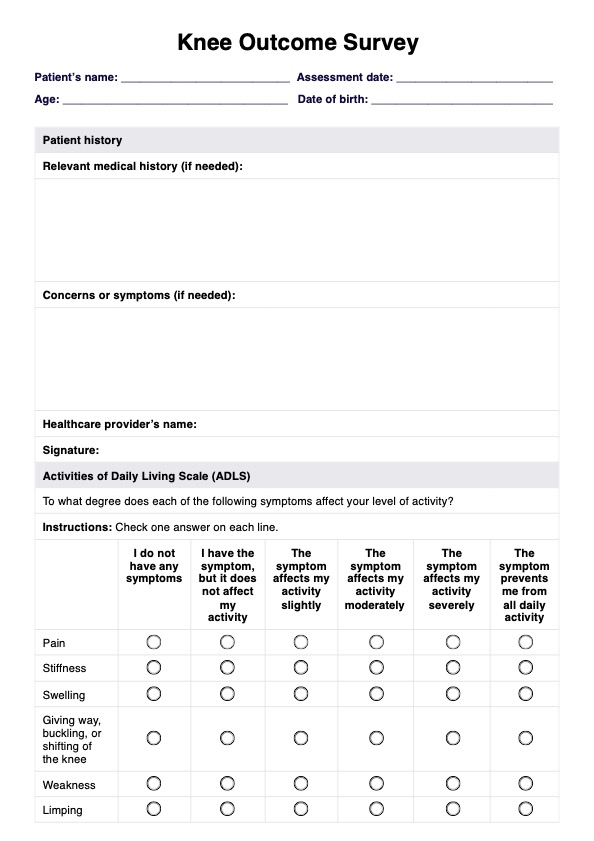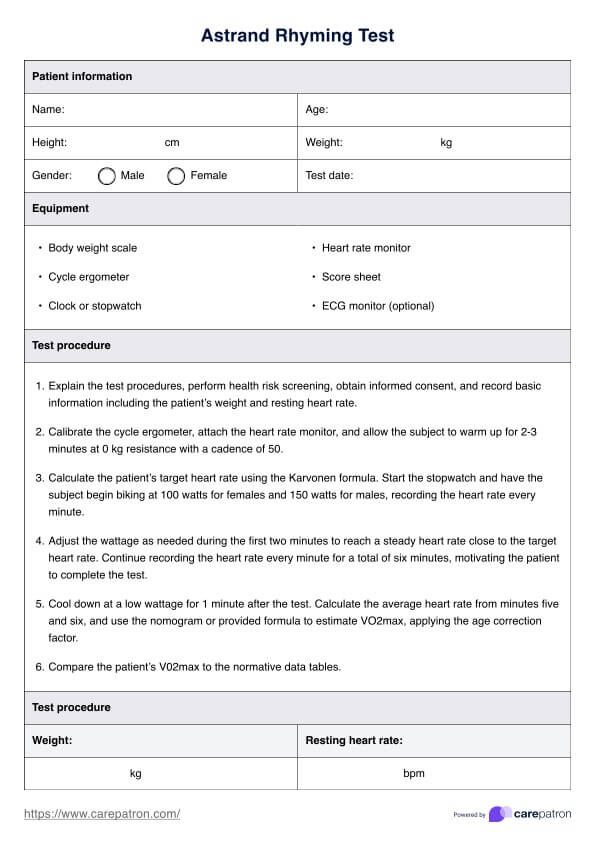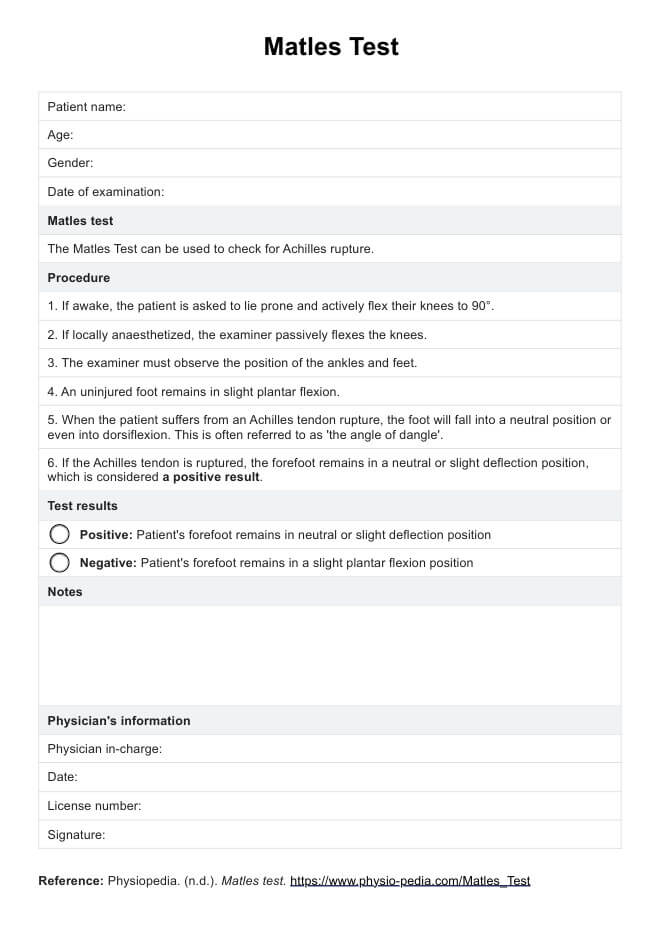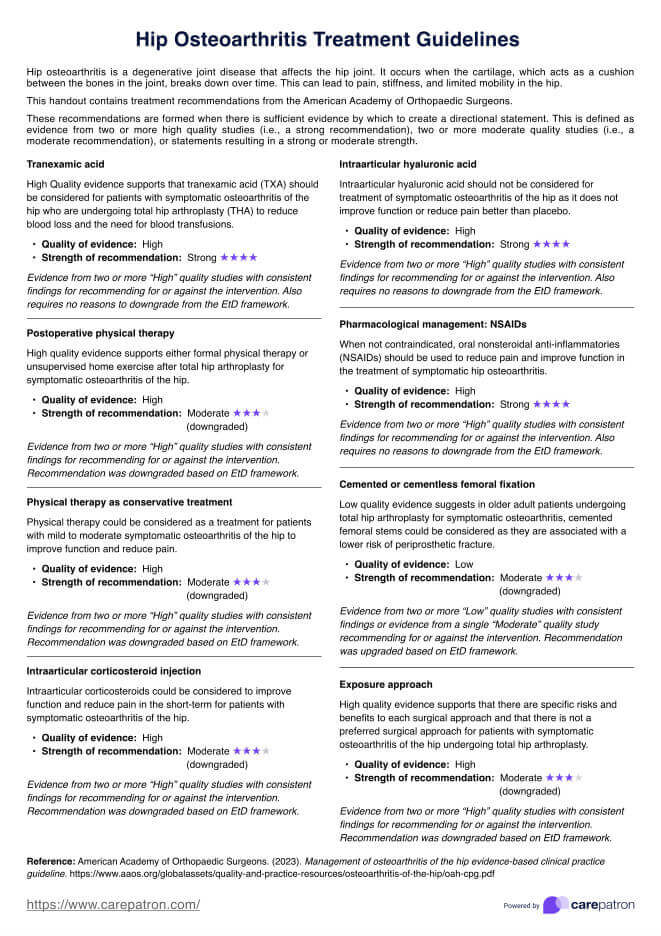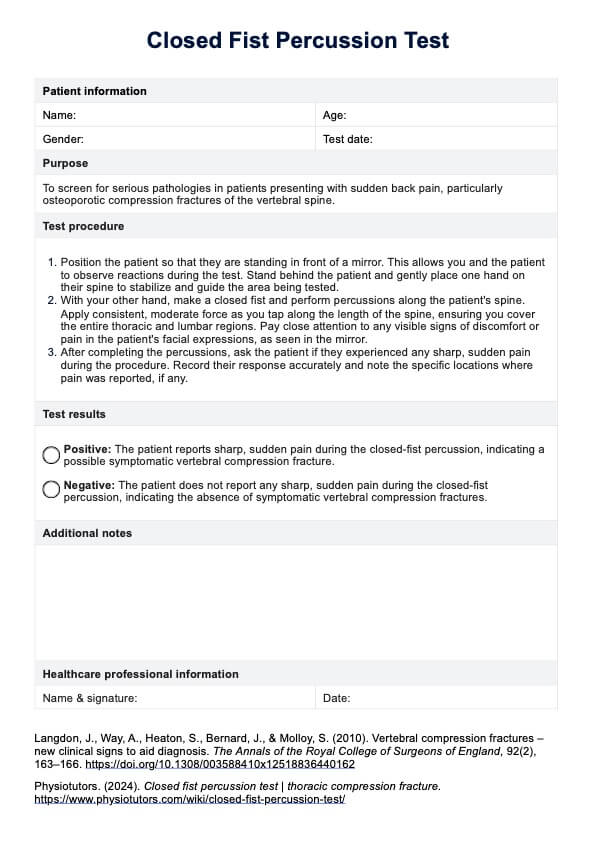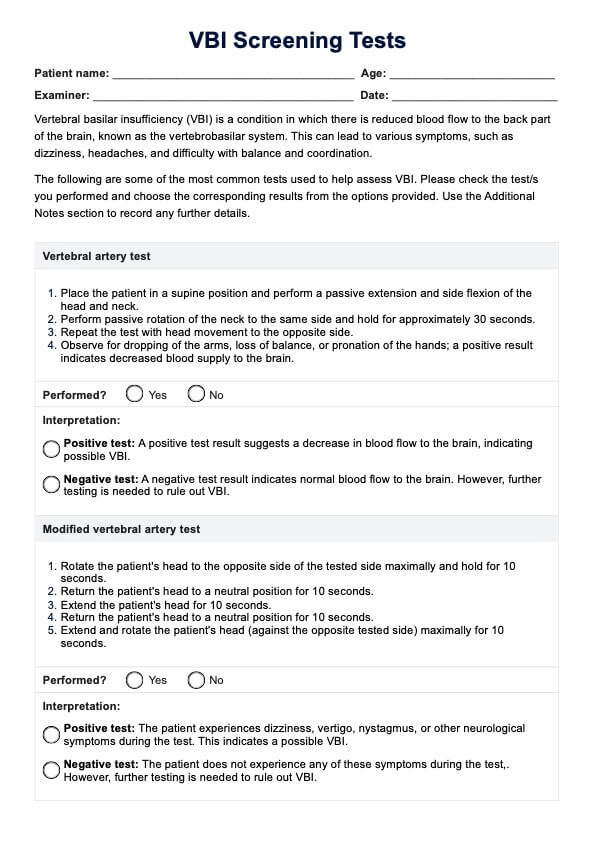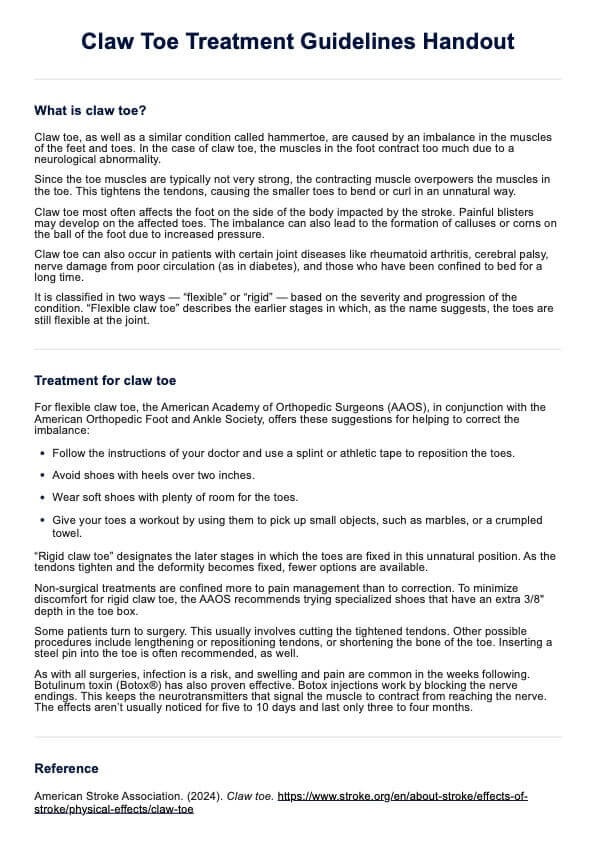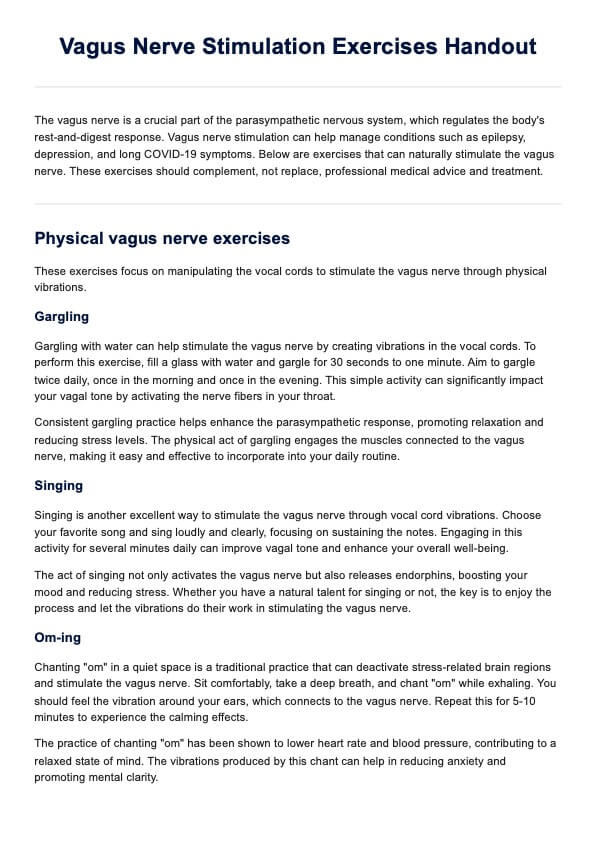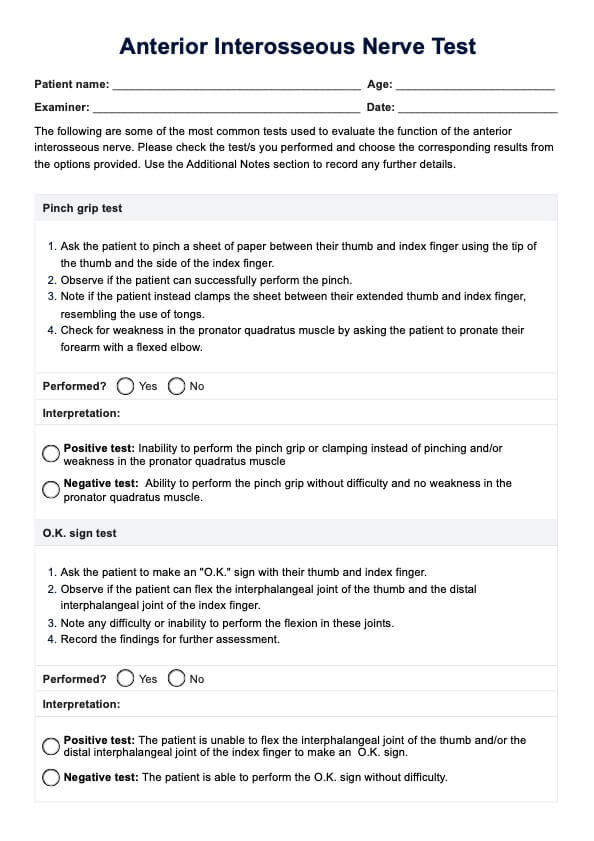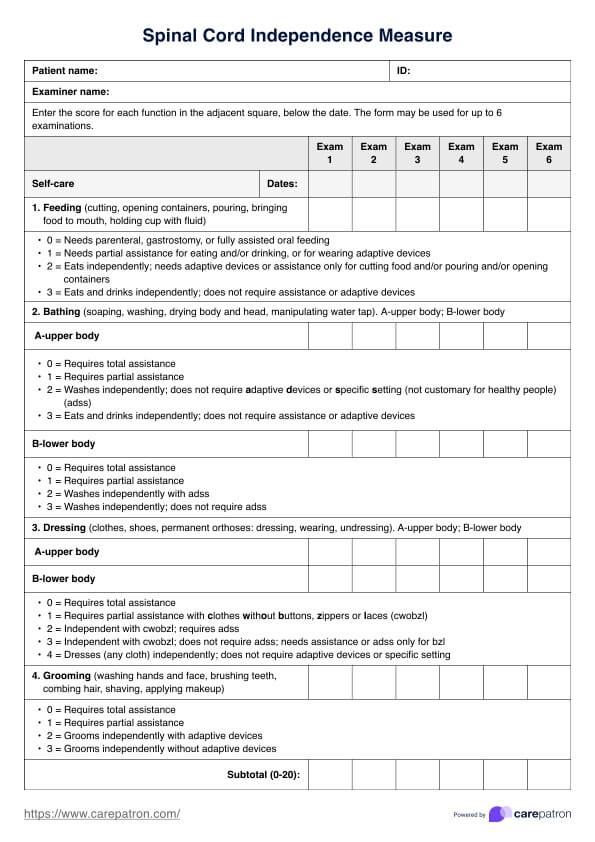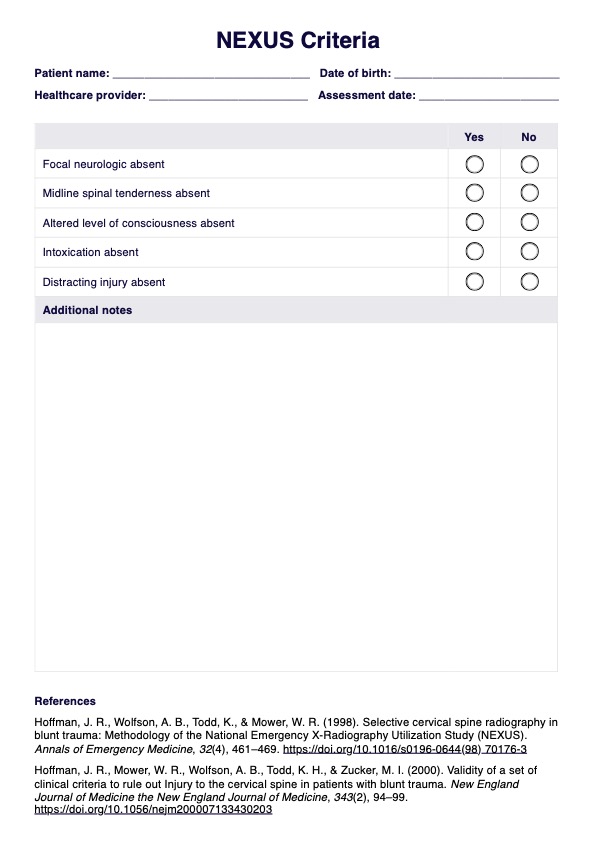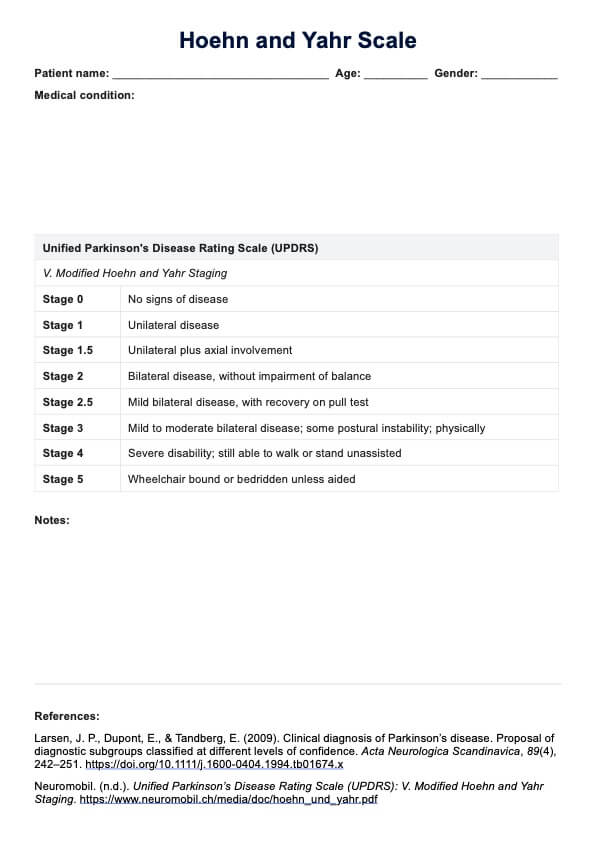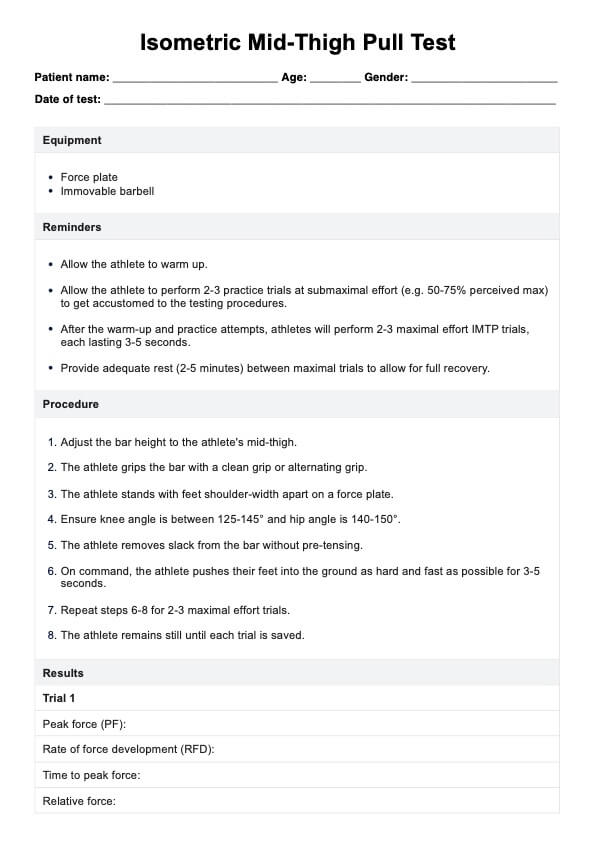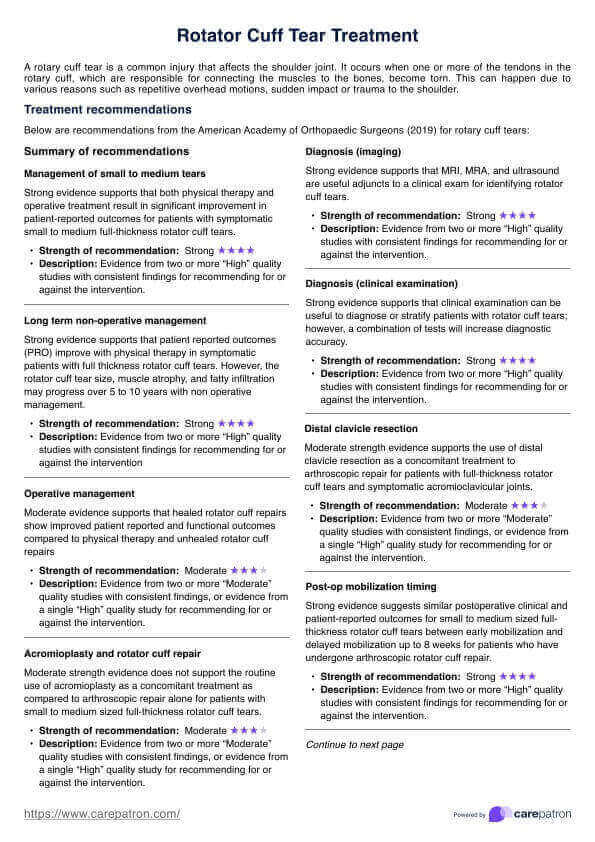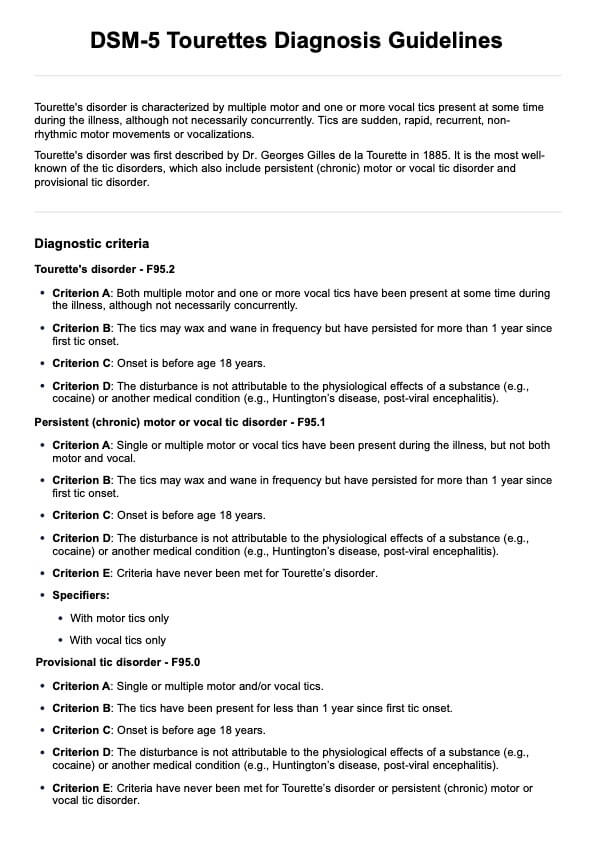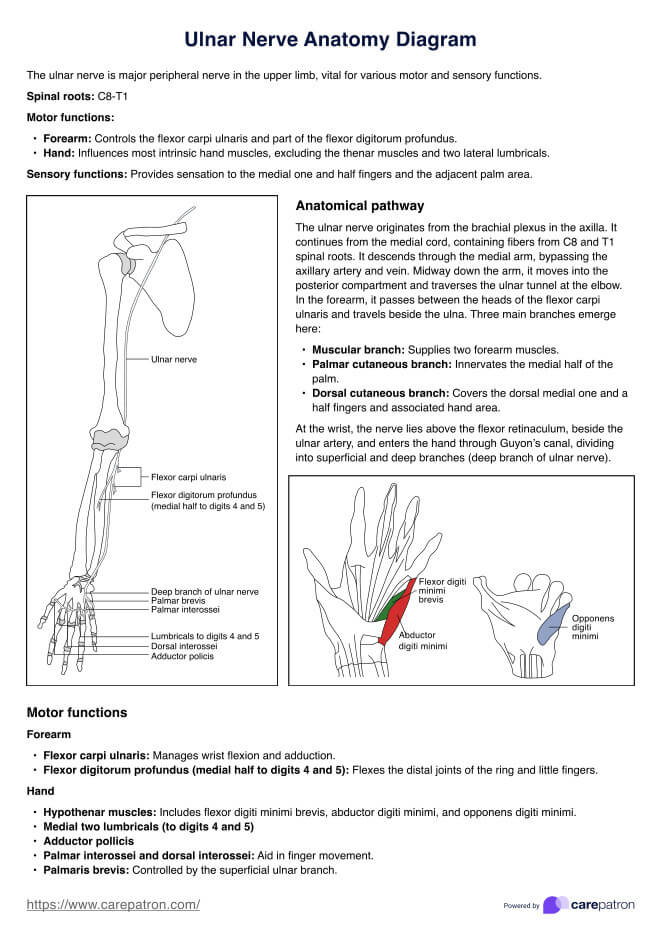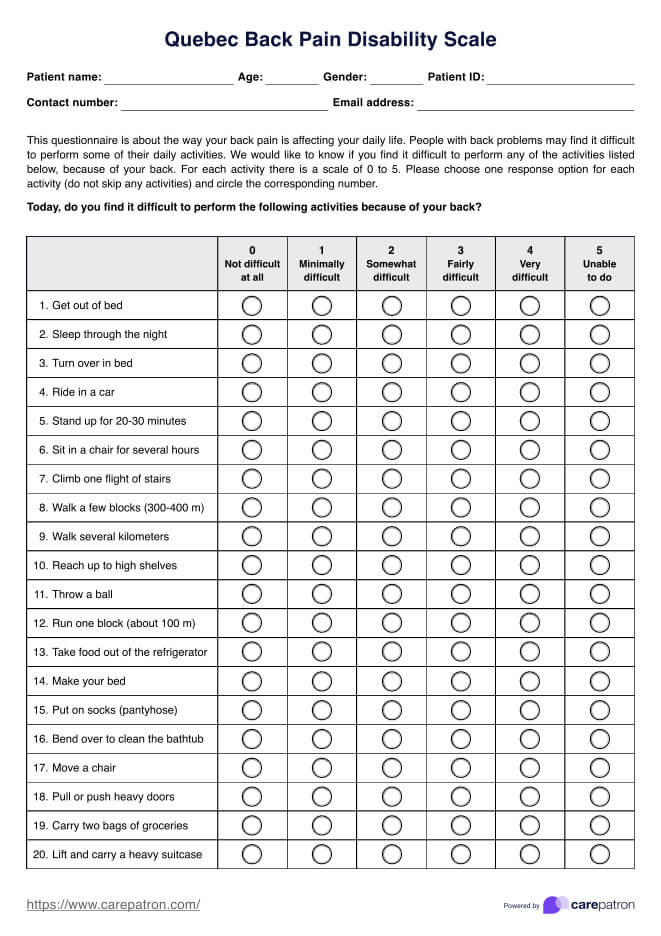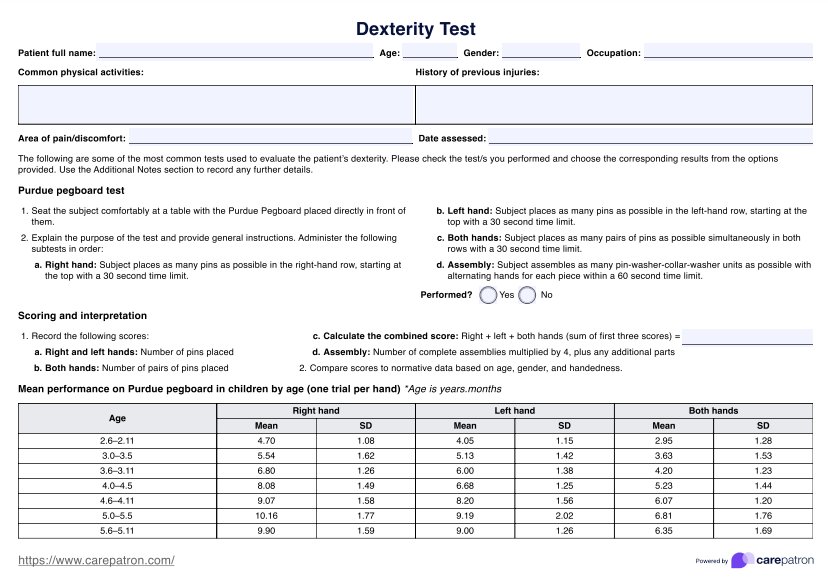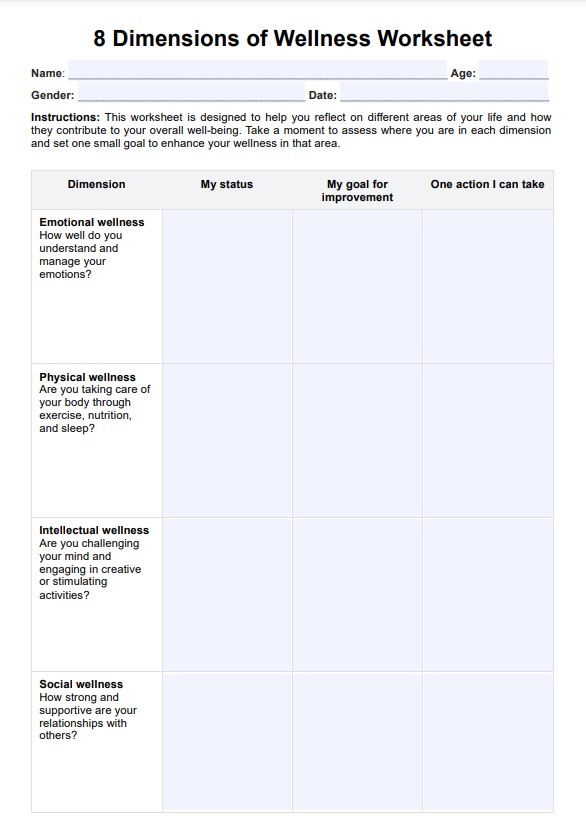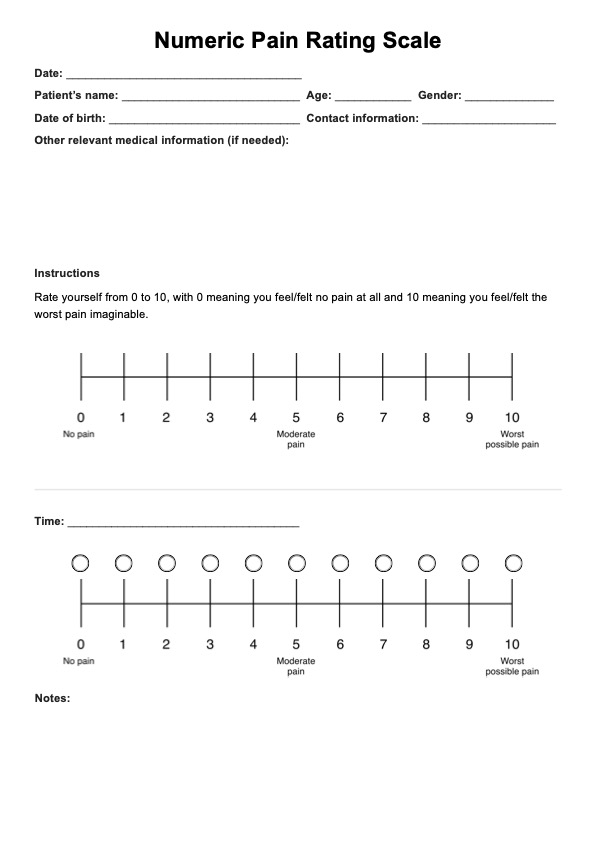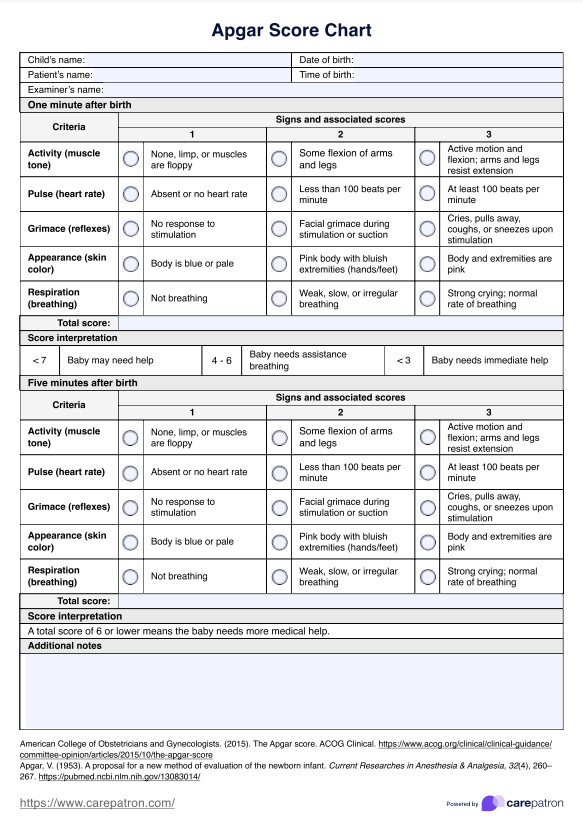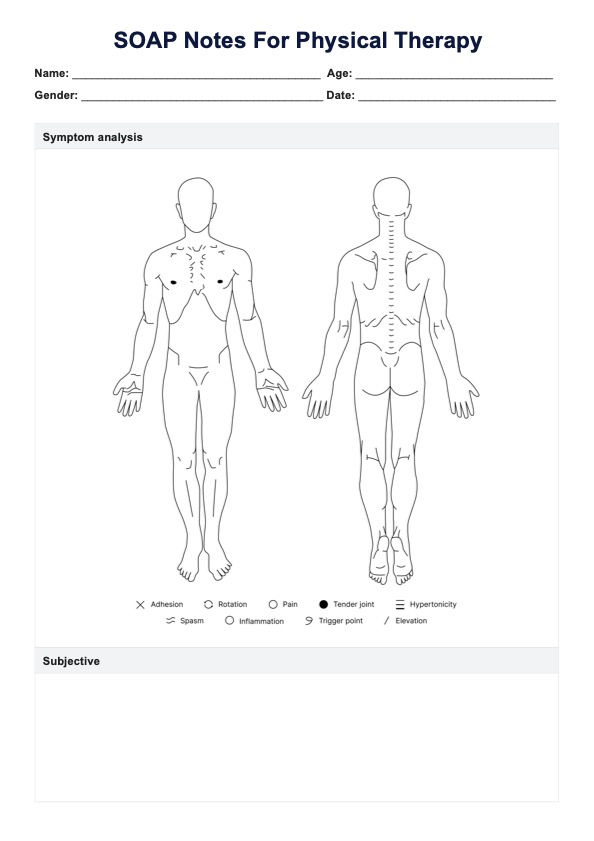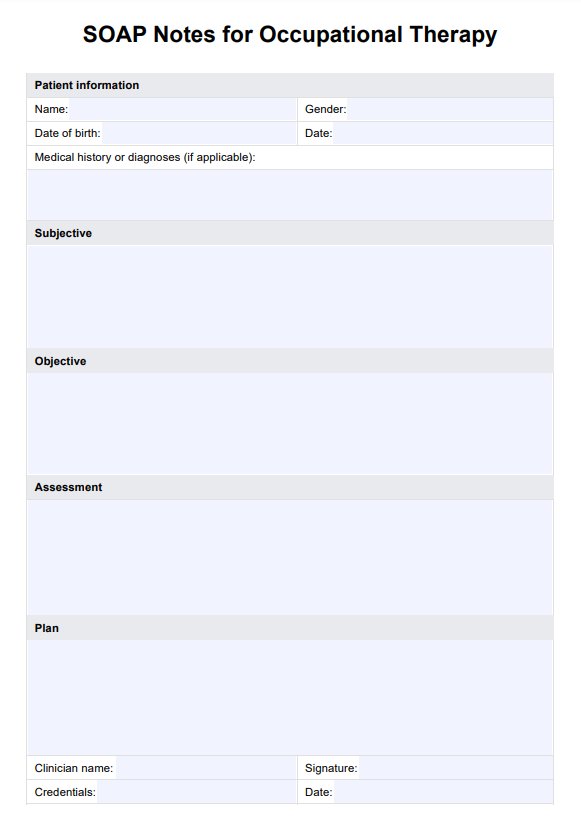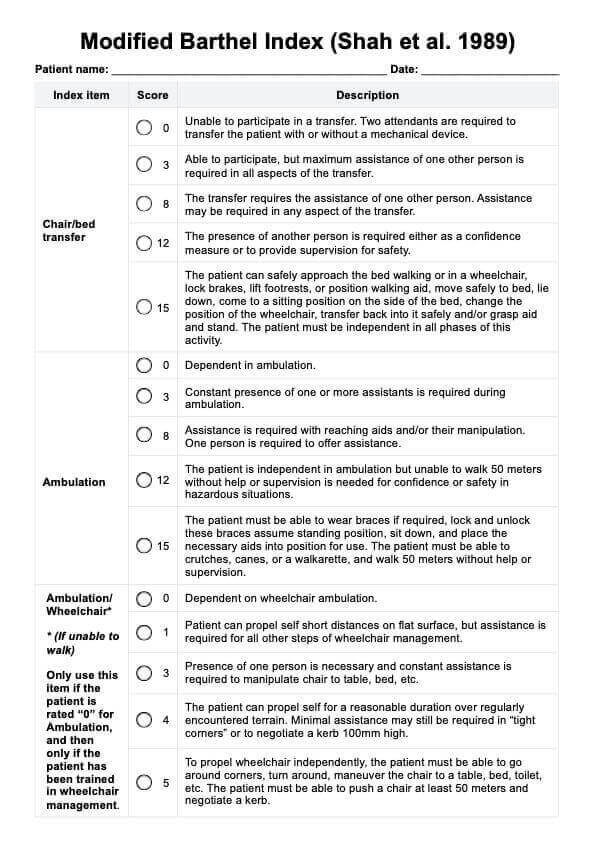Action Research Arm Test
Observe, measure, and note your patient’s upper extremity performance on our free downloadable Action Research Arm Test (ARAT) template.


What is an Action Research Arm Test?
An or ARAT is an observational tool used to assess a client’s upper extremity performance, specifically its function, coordination, and dexterity during recovery. In fact, the creator of the test said that the ARAT is a modified version of the Upper Extremity Function Test.
The test itself has 19 items categorized into four categories or what they call subscales, namely:
- Grasp Subscale
- Grip Subscale
- Pinch Subscale
- Gross Movement Scale.
Per subscale, the items or tasks are organized from increasing to decreasing difficulty. According to the creator, this organization helps in test efficiency. If clients can perform the first task, they no longer need to do the easier subsequent tasks per subscale.
Given that this test is a modified version, it does carry similarities to the Upper Extremity Function Test, such as the equipment and some test instructions. However, the differences lie in the scoring, the time required to complete the test, and, as stated above, the grouping and arrangement of the items.
Action Research Arm Test Template
Action Research Arm Test Example
How does this Action Research Arm Test (ARAT) work?
Step One. Prepare the Equipment and Form
Access and download the form by clicking the “Use this Template” button on the left or searching for it in Carepatron’s template library. Then, once you have your hands on it, fill out the corresponding details: date, patient’s name, rater’s name, and rater’s signature.
Afterward, prepare the needed set-up and equipment. Avail of a test kit or obtain the following objects individually:
- Chair (without armrests)
- Table
- Wooden Blocks (various sizes)
- Cricket Ball
- Sharpening Stone
- Tubes (preferably alloy)
- Bolt and Washer
- 2 glasses
- Marbles
- Ball Bearings
- Tin Lid
Step Two. Conduct the Arm Research Arm Test
Once everything has been prepared, it’s time to conduct the ARAT.
Here’s a quick refresher of the general instructions:
- If the patient can finish the first task under the subscale, you can proceed to the next one.
- If the patient is unable, proceed to the second task.
- If they cannot finish this task or receive a score of 0, you can stop testing this subscale and move on to the next task.
- If they can do the task, even partially, ask them to do the subsequent tasks.
Step Three. Write Score Per Subscale
After every task, it’s recommended that you write the score per task, per subscale right away since the test flow depends on the score they will receive, especially during the first and second tasks.
The test, as well as the scoring, must be done one arm at a time.
Step Four: Compute the Total Score
Compute the total score by adding the subtotal per subscale. This will result in a number that will help you assess whether or not they are in poor, moderate, or good recovery.
Step Five: Proceed with the Next Steps
Once you’ve interpreted the results according to the total score, a review of their current recovery program for keeping or changing can help improve the patient’s condition and state to, hopefully, have a better score the next time.
When to Use an Action Reach Arm Test?
An Action Research Arm Test is essential for medical practitioners to assess the client’s Upper Extremity Function. With this in mind, it’s best that they use the template:
- When the patient needs to track their progress during or after a recovery program
- When the patient has severe motor impairments but doesn’t have any amputations on their upper body, especially hands and fingers. Any test they cannot perform due to their amputation will immediately result in a 0 for that task.
- When the patient doesn’t have cognitive impairments that may affect their capability of understanding the instructions
- When they are in areas where there’s a table, chair, and silence to prevent distraction
One more important thing to note when using an Action Research Arm Test is that its scoring is subjective, and there’s no specific duration given for the interpretation of “abnormally long”. Therefore, though this test is reliable, it can also be accompanied by further testing and consultation with those involved in caring for the patient for a more comprehensive assessment.
Who is this Online Action Research Arm Test for?
This Action Research Arm Test you can download or accomplish online can be used by any healthcare professional who is tracking or is in charge of the following patients who experienced or are diagnosed with the following:
- Parkinson’s disease
- Multiple sclerosis
- Brain Injury
- Stroke
- Vestibular Disorders
More specifically, the individuals above must be in the middle or at the end of their recovery program since this test will see their progress or assess, in a way, the effectiveness of the treatment plan.
As for the list of specialists who care for these types of patients, you may refer below for a list:
- Physical Therapists
- Occupational Therapists
- Rehabilitation Nurses
- Recreational Therapists
- Physiatrist
- Primary Care Physician
.png)
Benefits of the Free Action Research Arm Test PDF
Fully Digital
When you have a kit or several pieces of equipment to prepare or carry to the testing center, worrying about physical copies and pens can be a hassle for some practitioners. It’s a good thing that you can download our free Action Research Arm Test template as a PDF and edit it on any gadget you have on hand.
Cost Effective
Aside from accessibility because of the template’s digital nature, you can also save spending on paper, printers, printer ink, and drawers for physical storage since your filled-out templates can be saved alternatively on secure EHRs such as Carepatron.
Fast Results
With less time needed for template searching and creating, and conducting the test itself - since it should only take around 20 minutes - you can get results in no time.
Tracking Progress
Has the patient done the test before? If yes, you can use this template as a point of comparison. If not, this document can be a great resource for what to change or maintain in the patient’s current rehabilitation program.
Reliable
Since this test is a modified version of the UEFT, it is, in a way, more reliable. This template, in particular, is reliable because it comes complete with all the tests the patient has to do and a scoring legend for guidance.
Commonly asked questions
Ronald Lyle, who modified the Upper Extremity Function test, produced the Action Research Arm Test in 1981.
You can score the Action Research Arm Test by following the legend or guide written on the template. In general, if the patient is fully capable of accomplishing the task, they will receive a 3 and if unable, they will receive a 0.
The difference between this test and others, however, is if the patient receives a 3 on the first task per subscale, they automatically receive a perfect score for that subscale under the arm they are testing.
If a patient obtains the perfect score of 57, it’s safe to say that their road to recovery is smooth and that the program is effective. However, if they receive anything less than 57, there’s a need for intervention and a review of the practitioner’s rehabilitation and recovery plan.


